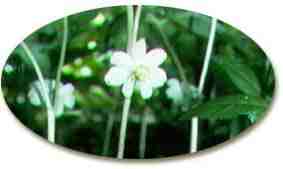
| | You are here : Home > Museums > Herbarium Herbarium 
 Herbarium of Natural History Museum of Iran Herbarium of Natural History Museum of Iran
Herbarium of Natural History Museum of Iran established approximately in 1970.The herbarium of Natural History Museum is one of the major references in the modern and
systematic research on different plants in protected areas. This section is one of the essential references for research and education in environmental categories. The most Herbaria of Iran distributed in Tehran, which this Herbarium with more than 15000 specimens (include: 147 families, 784 genera and 2000 species) is one of the major of them. This center is a unique Herbarium that study the plant diversity appointed to protected areas of Iran, based on the classical and modern systematic.
A powerful database supports the information of specimens, which based on more than 20 data fields. In the other hand, this information system makes updated reports and many types of geographical distribution maps.
 Mission Statement Mission Statement
The mission of the Herbarium of Natural History Museum of Iran is to generate, provide access to, and transfer knowledge on the nature, extent and origin of botanical diversity of our country, making use of its extensive herbarium collections and associated information. It thus helps to provide a comparative base for all botanical sciences and to contribute to the conservation and sustainable use of natural resources.
 Research themes and research plan Research themes and research plan The immense and largely poorly known botanical diversity of our country requires a broad, multifaceted, yet clearly prioritized approach. The research program of Herbarium of Natural History Museum of Iran addresses the following major themes: - taxonomy of important groups of plants and macro fungi (for regional and world monographs, regional floras, etc.)
- biodiversity assessments (based on herbarium data, field inventories, and monitoring of floristic change)
- phylogeny and biogeography (using morphological, anatomical and molecular attributes and cladistic analysis)
- speciation and population differentiation
- management and dissemination of taxic biodiversity information (in user-friendly electronic form and hard copy, and fully exploiting the wealth of information linked with collections, and scattered in the specialized literature)
The resent studies and activities of Herbarium are as following:

I) Medicinal plants:
One of threats for plant diversity of Iran is medicinal usage. Some medicinal plants, which were very abundant, only a few decades ago are endangered now from their natural habitats. Examples are: Ferula assa-foetida (giant fennel), Ferula gumosa (galbanum plant), Carum carvi and C. caucasicum (caraway), Thymus kotschyanus (thyme), Pistacia vera ( pistacia) and etc.
Now 240 species of medicinal plants in the north of Khorasan province has been studied. These species belongs to 42 families. Many of them belong to Lamiaceae and Asteraceae.
II) Trees and shrubs: 
There are near to 80 woody families in Iran that contain more than 200 genera. The biggest families are Rosaceae (with near to 20 genera), Fabaceae (with near to 30 genera) and Chenopodiaceae (with near to 16 genera). Between these families, Rosaceae is biggest one with more than one hundred species (Amygdalus with near to 20 species, Cotoneaster with near to 12 species, Crataegus with near to 18 species, Rosa with near to 20 species, Rubus with near to 8 species and etc.).
The other biggest are: Calligonum ( Polygonaceae ) with near to 12 species, Convulvulus ( Convulvulaceae ) with near to 20 species, Ephedra ( Ephedraceae ) with near to 12 species, Salix ( Salicaceae ) with near to 13 species, Salsola ( Chenopodiaceae ) with near to 9 species, Tamarix ( Tamaricaceae ) with near to 27 species and etc.
One of the relic floras of the Tertiary flora (an alive fossil) is Parrotia persica (D.C.) C.A. Meyer (Hamamelidaceae). It’s a beautiful tree (multicolor) in autumn that distribute in Hyrcanian forest (coastline of the Caspian sea, north of Iran).
III) Herbaceous Plants: 
Different topographic and climatic conditions have resulted in a great ecological and botanical diversity in Iran. Therefore in Iran there are 167 families of vascular plants, which is a relatively high number in comparison with the total number of plant families in the world. On the other hand, herbs and bushes are more than of shrubs and trees species in Iran. Some of abundant herbaceous plant families of Iran are : Poaceae (with near to 120 genera), Asteraceae (with near to 160 genera that most of them are herbaceous plants), Apiaceae (with near to 114 genera that most of them are herbaceous plants), Brassicaceae (with near to 109 genera that most of them are herbaceous plants), Lamiaceae (with near to 46 genera that most of them are herbaceous plants), and etc.
IV) Presentation and Demonstration: 
A section of Natural History Museum has belonged to plant specimens. In this area, there are some samples of Industrial woods, Aromatic plants, Medicinal plants, Alcaloid plants, Starch plants, Oil plants, Fiber plants, Foliage plants, Nuts, Leguminous, Cereal and Fruits.
Also in this part, there are a vegetation map and some of beautiful posters of Iran that show vegetation (plant formations).
There are many different seeds,fixed in resin. Also there are also some dried plants (in their natural position)
In following page you can find a very interesting document which describes how you can make a Herbarium in your Home Or your Office! Make a Herbarium
 Staffs of Herbarium: Staffs of Herbarium:
1- Tahereh Eftekhari , PhD , Head and Researcher , Email : T_Eftekhari@Yahoo.com
2- Fatemeh Salehi Yeganeh Rad, BSc., Researcher.
3- Mohammad Javad Ahmadi, BSc., Researcher.
4- Mohammad Hasan Jafari Sayadi, PhD Candidate, Researcher, Email: Mhjsayadi@Yahoo.Com
5- Ogtay Ghaleh Beigi, BSc., Researcher, Email: O_GhalehBeigi@Hotmail.Com you can also refer to these pages for more information : |


 Research themes and research plan
Research themes and research plan